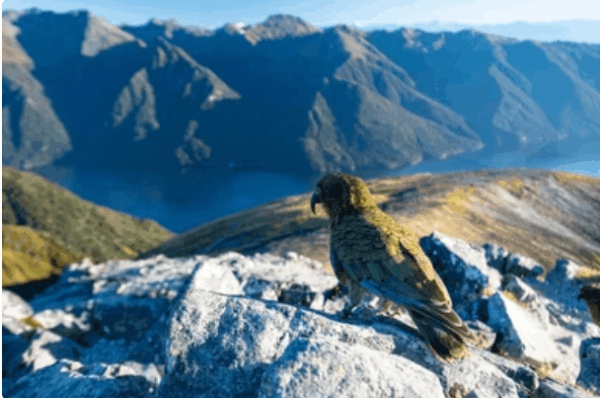A historical and future-facing analysis of New Zealand’s alpine parrot by Andi Cockroft, Chairman, CORANZ
Foreword
Following my thoughts on 1080 published earlier, it occurred to me that the mischievous Kea is almost a litmus test for what is actually happening to wildlife in New Zealand. 30 or 40 years ago, Arthurs Pass was full of Kea. They ripped windscreen wipers from cars and bent aerials. they were a nuisance – but in a good comedic way – at least to me. Yet last time I visited Arthurs Pass, not a single Kea was in evidence – something major has happened in those intervening years, but what?
Introduction
The kea (Nestor notabilis), the world’s only alpine parrot, occupies a unique space in the cultural, ecological, and historical story of New Zealand. Revered for its intelligence, feared for its mischief, and once hunted as a pest, the kea has undergone one of the most dramatic status reversals of any New Zealand species. For roughly a century, the government offered cash rewards for killing kea—an unthinkable situation today. Yet the effects of that long persecution, combined with modern hazards, continue to threaten the species’ survival.

The Mythical Kea: Trickster, Thief, and Mountain Spirit
Before Europeans arrived, kea lived largely in Māori oral traditions as enigmatic birds of the high mountains. Some Ngāi Tahu accounts regard kea as guardians of alpine passes. Early travellers told tales—often mythic or embellished—of kea predicting storms, guiding lost climbers, and stealing gold miners’ tools. This folklore cemented the kea as a symbol of intelligence, mystery, and playful danger.
Arrival of Europeans: From Curiosity to Enemy Number One
The introduction of sheep farming in the 19th century changed everything. Reports emerged of kea attacking sheep, particularly sick or stranded animals. Whether kea regularly attacked healthy sheep is still debated. Some accounts are likely true; others exaggerated or shaped by compensation incentives. Regardless, the belief exploded that kea were sheep killers, and in 1868 the first government bounty was introduced. Over the next century, more than 150,000 kea were killed.
Partial Protection and Slow Reform
By the early 20th century, concerns grew among naturalists that kea numbers were falling. Yet the bounty persisted until 1971. The Wildlife Order 1970 granted partial protection, but it was not until 1986 that kea received full legal protection. By then, vast areas of their former range had been emptied. The surviving populations were fragmented, depleted, and vulnerable.
Modern Threats: Persecution by New Means
Today, introduced predators—stoats, possums, rats, and cats—remain the leading killers of kea chicks. Lead poisoning from old huts and buildings is a major threat, with many kea showing dangerously high blood lead levels. Human conflict continues: kea tear rubber from cars, investigate buildings, and raid rubbish. Problem birds are sometimes lethally controlled, echoing the past. Tourist feeding also trains kea into risky and unnatural behaviours.
Conservation Efforts: Strategies but Slow Progress
In recent years, Te Rautaki Whakaora Kea (the Kea Recovery Plan) and programmes by the Kea Conservation Trust have targeted predator control, lead removal, and behaviour management. Where these measures are sustained, kea populations stabilise or grow. But conservation coverage remains patchy, and many regions still face decline.
What Happens if We Keep Repeating the Same Tactics?
If New Zealand continues with sporadic predator control, slow hazard mitigation, and reactive conflict management, kea will continue to decline. Local extinctions are likely. Kea may persist only in intensively managed strongholds. Continuing heavy reliance on toxins without kea-safe design risks ongoing accidental killings. Slow lead removal ensures poisoning will persist for decades.
A Different Future: Designing with Kea in Mind
A sustainable future requires a paradigm shift: landscape-scale predator control, complete removal of lead from alpine structures, kea-safe design standards for tourism and farming, and a shift in narrative from ‘kea as problem’ to ‘kea as partner’. Kea are not destructive by nature—they are highly intelligent birds responding to an environment filled with hazards and temptations. Good design can eliminate most conflict.
Conclusion
Kea have survived persecution, habitat change, and the impacts of human expansion. Their journey from ‘vermin’ to ‘endangered treasure’ mirrors New Zealand’s evolving relationship with nature. But their survival now depends on whether we continue the failing tactics of the past—or redesign our presence in the mountains to ensure they remain a living, laughing symbol of the Southern Alps.
